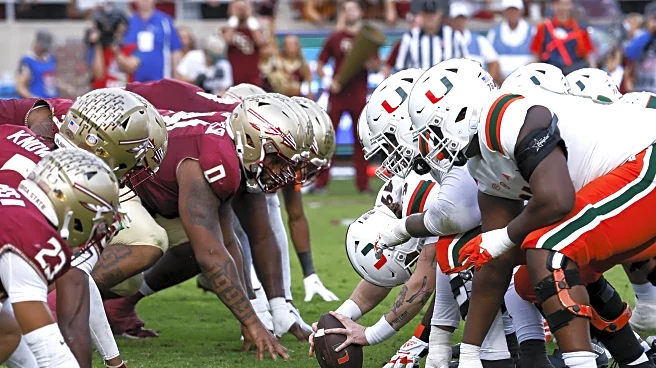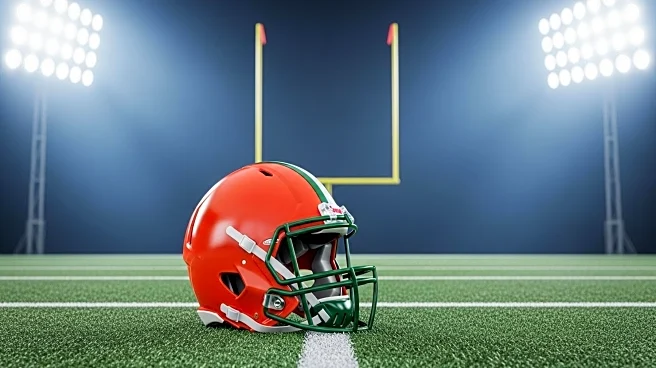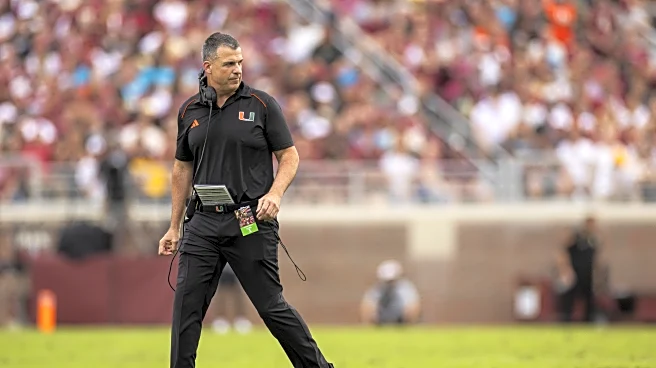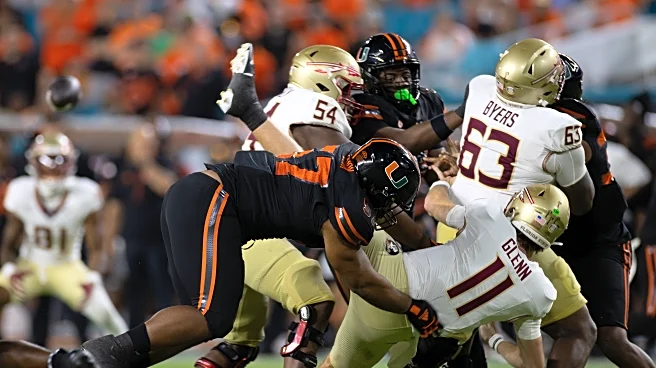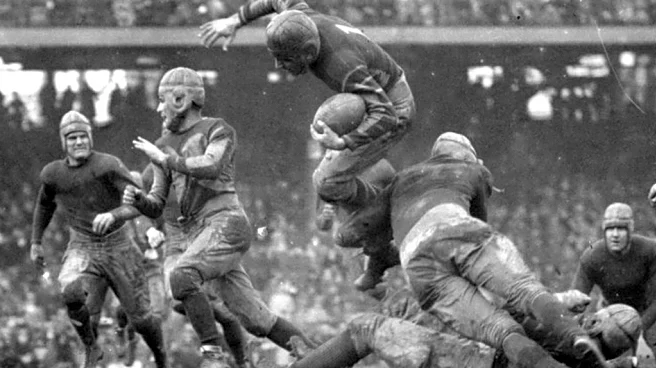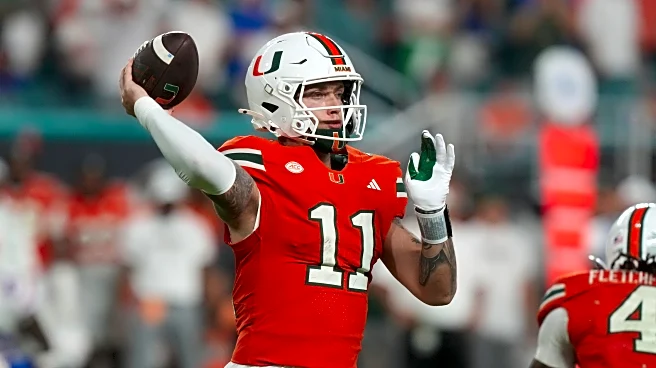What's Happening?
The historic rivalry between Florida State and Miami is set to reignite as the two teams meet as ranked opponents for the first time in nine years. This matchup, featuring No. 3 Miami and No. 18 Florida State, recalls the intense clashes of the past, characterized by dramatic finishes and fierce competition. The rivalry, which was at its peak from 1985 to 1994, included legendary games and players, such as Miami's Gino Torretta and Florida State's Charlie Ward, both Heisman Trophy winners. The rivalry has evolved in the digital age, with fans engaging in spirited exchanges on social media platforms, keeping the competitive spirit alive.
Why It's Important?
The renewed intensity of the Florida State vs. Miami rivalry highlights the enduring appeal of college football rivalries and their ability to captivate fans. This matchup not only brings back memories of past glories but also serves as a reminder of the cultural and social significance of college sports in the U.S. The rivalry's revival could have implications for recruitment, fan engagement, and the financial aspects of college athletics, as high-profile games attract significant attention and revenue. The outcome of this game could also impact the rankings and postseason prospects for both teams.
What's Next?
As the game approaches, both teams are focused on preparation, with Miami's coach Mario Cristobal emphasizing the importance of practice. The outcome of this game could influence the trajectory of both programs, potentially affecting their standings in the conference and national rankings. Fans and analysts will be watching closely to see if the rivalry can regain its former prominence and what impact it will have on the broader college football landscape.
Beyond the Headlines
The rivalry's shift to social media reflects broader changes in how sports fandom is expressed in the digital age. The online interactions between fans of both teams have become a modern extension of the traditional rivalry, showcasing how technology influences sports culture. This development highlights the role of social media in shaping contemporary sports narratives and the ways in which fans engage with their favorite teams.

